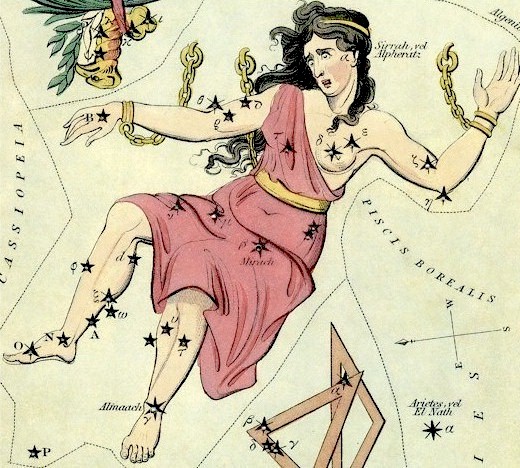NoelC wrote:It's pretty impressive to show so clearly the hydrogen features that the red plates from the POSS II DSS only show the barest hint of, and only then when pushed beyond any reasonable limits. I sense you've compressed a monstrous dynamic range into the result. Not bad - it looks pretty natural.
-Noel
Noel, you're back! I've really missed you!

And Rogelio, that's a splendid image. You've outdone yourself again!

Galaxy M82. Photo: Ken Crawford.
Clouds of Andromeda. Photo: Rogelio Bernal Andreo.
I have to agree with those who think that it looks as if the red clouds of hydrogen seem to follow the outline of the Andromeda galaxy, but I also agree that this is an illusion. M31 itself shows no signs of of being associated with the sort of galactic outflows that might show up as a red halo engulfing the entire galaxy.
Check out the picture of galaxy M82 at left. You can see that the red clouds of hydrogen emanate from the center of the galaxy. Note that the outflow at upper left stretches far away from the galaxy, almost as far away as the galaxy is long. By contrast, no red clouds can be seen at the edges of the disk. Also there are no red clouds elsewhere in the background.
M31 looks completely different in today's APOD. Its core appears to be completely "quiet", and there is no obvious association between the red clouds and the galaxy at all. Instead, the little red puffs of gas are scattered all over the picture, as they would be, if they were associated with our own galaxy and not M31.
However, there are some interesting and apparently wind-blown red gas structures at top center in today's APOD. If they were not ionized by the galaxy, what caused them? I'm going to stick my neck out and guess that they may, indeed, be a remnant of a past outburst of Nu Andromeda, the brightest blue star in the picture, located just below center. Unfortunately, Nu And is a B5-type star, with a "surface temperature" of about 15,000K, which is really too cool to ionize a nebula. Yes, but you have to remember that the nebula in today's APOD is exceedingly faint. Also Nu And is a tight binary star, and according to
Jim Kaler, the two components of Nu And are separated by only about three stellar radii! I can easily see them having had an outburst of some sort in the past, which may have left behind this very faint nebula.
Anyway, what a great picture! Again, thanks, Rogelio!
Ann
 Clouds of Andromeda
Clouds of Andromeda
